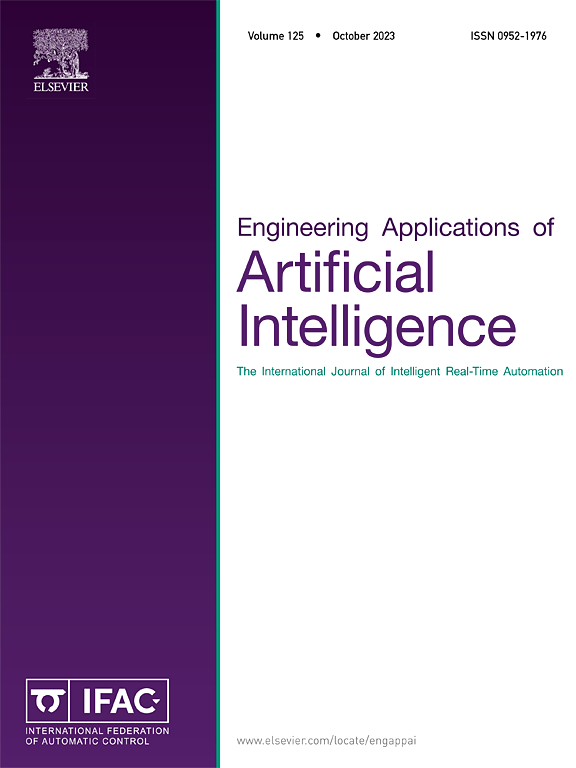On-board detection of rail corrugation using improved convolutional block attention mechanism
IF 7.5
2区 计算机科学
Q1 AUTOMATION & CONTROL SYSTEMS
Engineering Applications of Artificial Intelligence
Pub Date : 2025-02-22
DOI:10.1016/j.engappai.2025.110349
引用次数: 0
Abstract
Leveraging acceleration sensors affixed to the train body enables continuous surveillance of rail corrugation, delivering cost-effectiveness, operational efficiency, and portability. Establishing the correlation between vertical body acceleration and rail corrugation poses a substantial challenge. To ensure uninterrupted monitoring of rail corrugation, an initial development involved constructing a train-track integrated simulation model that accounted for the dynamics of flexible wheelsets and tracks, thereby generating a simulated dataset of vertical body acceleration. Subsequent improvements were made to the conventional Convolutional Block Attention Module (CBAM) architecture, culminating in the proposal of a deep one-dimensional convolutional residual network model named Train Body Vertical Acceleration Network (TBVA-Net), founded on an improved CBAM framework. Training was conducted using the simulated dataset, showcasing the reduced model complexity and total parameter count of the improved CBAM architecture, which notably amplified classification accuracy. The TBVA-Net, employing the refined CBAM, consistently achieved test accuracies exceeding 95%, averaging at 98.6% on the simulated dataset. Validation through field-measured data corroborated the rationale behind the proposed TBVA-Net architecture. Fine-tuning with a limited subset of labeled field data led to a transfer accuracy of 98.5%. This paper presents an innovative approach for detecting rail corrugation through vertical acceleration signals obtained from operational vehicles.
求助全文
约1分钟内获得全文
求助全文
来源期刊

Engineering Applications of Artificial Intelligence
工程技术-工程:电子与电气
CiteScore
9.60
自引率
10.00%
发文量
505
审稿时长
68 days
期刊介绍:
Artificial Intelligence (AI) is pivotal in driving the fourth industrial revolution, witnessing remarkable advancements across various machine learning methodologies. AI techniques have become indispensable tools for practicing engineers, enabling them to tackle previously insurmountable challenges. Engineering Applications of Artificial Intelligence serves as a global platform for the swift dissemination of research elucidating the practical application of AI methods across all engineering disciplines. Submitted papers are expected to present novel aspects of AI utilized in real-world engineering applications, validated using publicly available datasets to ensure the replicability of research outcomes. Join us in exploring the transformative potential of AI in engineering.
 求助内容:
求助内容: 应助结果提醒方式:
应助结果提醒方式:


